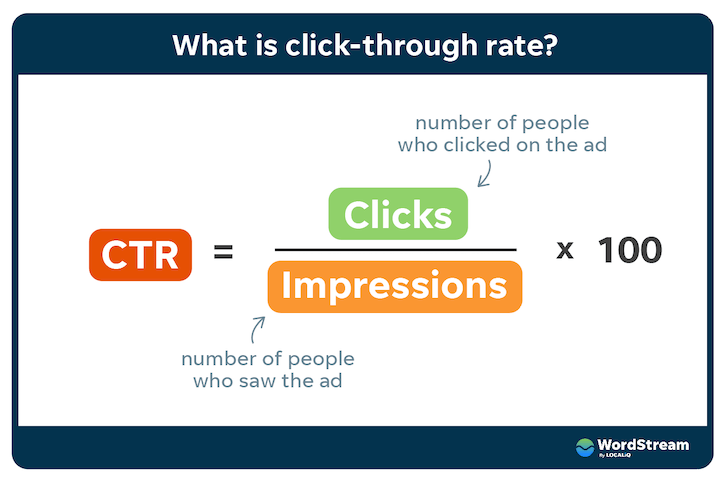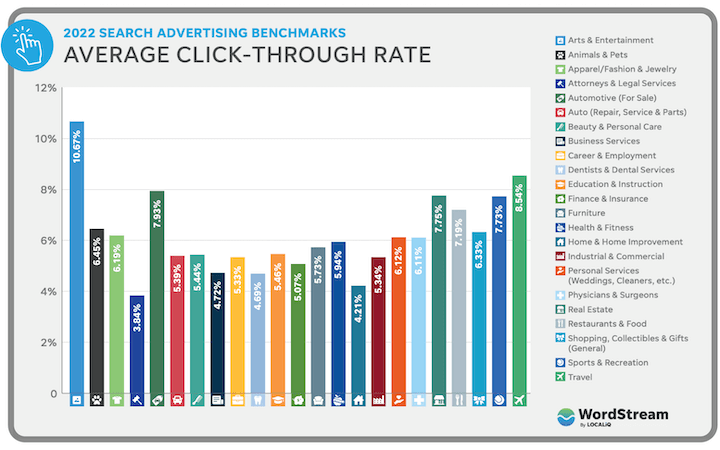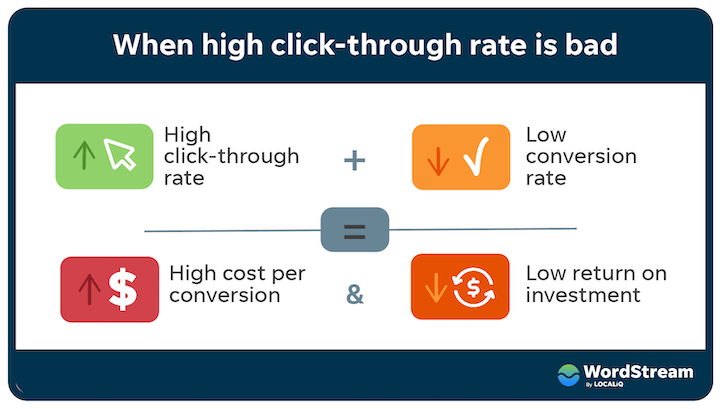Are you scratching your head wondering, why is CTR low and how to improve it? If you’re pouring effort into your ads, emails, or SEO content and still not seeing those much-desired clicks, you’re not alone. Low CTR (Click-Through Rate) can feel frustrating and mysterious. But with the right insights, you can unravel patterns, pinpoint bottlenecks, and take concrete steps to improve your CTR across digital channels. Today, we’re breaking down exactly what causes a low CTR, how it impacts your strategy, and, most importantly, how to boost those click numbers using SEO-proven, ad-tested, and content-marketing best practices. Let’s dive right in and transform those missed opportunities into measurable wins!

What is CTR (Click-Through Rate) and Why Is It So Important?
Before digging into causes and improvement tips, let’s clear up what Click-Through Rate actually means. Simply put, CTR measures how often people click on your ad, link, or call-to-action compared to how many people see it. It’s one of the most basic – yet important – metrics in digital marketing. The CTR formula is straightforward:
CTR = (Clicks / Impressions) × 100

A high CTR means your messaging resonates and entices action. A low click-through rate? That usually signals a disconnect between your audience, offer, or presentation. When CTR dips, it also impacts other crucial KPIs, like conversion rate, Quality Score (in Google Ads), or SEO page ranking.
Types of CTRs: Where Does It Matter?
- Google Ads: High CTR boosts your ad’s Quality Score, reducing costs.
- SEO/Organic Search: Clicks from Google’s results drive organic traffic.
- Email Marketing: Email CTR shows how enticing your content or offers are.
- Display & Social Ads: Gauge audience interest and creative strength.
- Video Platforms (YouTube, etc.): Thumbnail CTR can rocket your views and growth.

Why Is CTR Low and How to Improve It?
Low CTR creeps into almost every digital channel. But the reasons aren’t always the same! Understanding the root causes for low click-through rates is step one before you can effectively improve. Here are the most common culprits:

Common Reasons for Low CTR
- Poor Targeting: If your message reaches the wrong audience, CTR plummets.
- Bland or Misleading Headlines: Weak value proposition or vague headlines fail to spark curiosity.
- Uninspired Visuals: Low-quality images or irrelevant graphics often get ignored.
- Weak CTAs: Calls-to-action that aren’t clear or appealing won’t get clicks.
- Ad Fatigue: Showing the same ad or creative repeatedly leads to banner blindness.
- Low Relevancy: If ad copy or metadata doesn’t match user intent, clicks stay low.
- Poor SEO: Unoptimized meta titles and descriptions hurt organic CTR.
- Placement Issues: Ads shown in the wrong context or to bot traffic can’t deliver real clicks.

Why Improving CTR is Crucial: Key Benefits
- Higher ROI: More clicks without added spend drive better campaign ROI.
- Lower CPC in Paid Ads: Platforms reward high CTR with lower costs.
- Better SEO Rankings: Google favors pages that earn higher organic CTR.
- Improved Engagement: More interest means a “warmer” audience.
- Insightful Data: Improving your CTR reveals what resonates (or repels) your audience.

Use Cases: Examples of Low and High CTR
Let’s look at a few why is CTR low and how to improve it use cases drawn from real-world examples:
- Google Ads: A locksmith runs local search ads but uses generic “Best Service” copy. Result: sub-1% CTR. After switching to “24/7 Emergency Locksmith – Call Now!” CTR jumps to 4%+.
- SEO Meta Titles: A blog’s title tag reads: “How to Start a Blog”. Updating it to “How to Start a Blog in 2024 (10 Easy Steps for Beginners)” lifts CTR by 2x, based on Google Search Console data.
- Email Newsletter: An e-commerce store sends bland “Spring Deals Inside!” subject lines = 1.5% CTR. After including curiosity (“Are You Ready for the #1 Secret Sale?”), email CTR rises to 3.3%.
- YouTube Thumbnails: Flat, text-heavy thumbnails get 2% CTR. Adding a human face with emotions and bold text: “My $1,000,000 Mistake” spikes CTR to 6%+.

How to Improve Low CTR: Step-by-Step Proven Process
Ready to take action and improve your click-through rate? Whether you’re fixing Google Ads, email campaigns, or organic listings, this process works every time.
Step 1: Audit Your Actual CTR Data
Start by benchmarking your current CTR in your analytics dashboard:
- Google Ads: Segment by keyword, ad group, and device.
- SEO: Use Google Search Console for landing pages & queries.
- Emails: Check campaign and list averages over time.

Step 2: Compare to Industry Benchmarks
Some industries are naturally “clickier” than others. Use benchmark reports from Wordstream, HubSpot, or Adzooma to see how you stack up. For example, a 3.1% average Google Ads search CTR is typical, but Display can be below 1%. Knowing your vertical’s norm helps prioritize problem areas and set realistic improvement goals.
Step 3: Refine Targeting & Audience Segments
Laser-focused targeting dramatically improves CTR. Revisit your buyer personas, negative keyword lists, location targeting, or audience exclusions. Filtering out irrelevant impressions means more of the right eyes on your message, boosting the odds of a click.
Step 4: Upgrade Your Headlines & Titles
Your headline is your first (and sometimes only) chance. Make it count:
- Use numbers, brackets, or the current year, e.g., “10 Proven Ways to Improve CTR in 2024”.
- Ask questions (“Why is Your CTR So Low? Find Out…”) to hook curiosity.
- Highlight benefits or urgency (“Don’t Miss Out – Limited Offer!”).
Step 5: Strengthen Your Visuals & Thumbnails
High-quality, relevant images and thumbnails skyrocket your click rates – especially on social, YouTube, or native ad platforms. Use faces, emotions, bold text, and clear contrasts. For emails, compress images for fast loading.
Step 6: Optimize Your Meta Data & Ad Copy
A tweak to meta descriptions, title tags, or call-to-actions can shift clicks:
- Include your target keyword close to the start.
- Make value clear and specific (e.g., “Save 30% on Shoes—Today Only!”).
- A/B test meta tags and ad copy for continuous improvement.
Step 7: Craft Compelling CTAs (Call-to-Action)
Generic CTAs like “Learn More” or “Click Here” rarely excite your targets. Personalize them. Try “Unlock Your Free Guide” or “See How We Improved Our CTR by 88%.”
Step 8: Test, Optimize, and Iterate
The best performing brands always test. Run A/B experiments on headlines, images, placements, and offers. Use results to keep improving your CTR month after month. Small tweaks, like changing a CTA color or rewording a headline, can deliver big uplifts.

Challenges, Myths, and Objections About CTR
Still unsure about pursuing higher CTR? Let’s bust some common myths and address challenges:
- Myth: “Click-Through Rate is all that matters.”
Reality: CTR is vital, but conversions matter more! Focus on both – a click only matters if it drives results. - Myth: “A/B testing isn’t worth the time.”
Reality: Even minor copy/image tweaks can double your CTR. - Challenge: “All my competitors have higher CTR – I can’t catch up.”
Fact: Most are not optimizing continuously. Consistency beats perfection. - Objection: “My industry averages are too low – why bother?”
Solution: Even a small uplift compounds into significant traffic and sales gains.
Worried about being penalized for a low CTR in Google Ads? If your Quality Score slips, you’ll pay more for every click. But the upside: improvement is totally under your control!

CTR FAQs: Everything You Want to Know About Improving Click-Through Rate
1. What is considered a good CTR?
A “good” CTR varies by channel. For Google Search Ads, 3-5% is common, while Display can be 0.5-1%. In organic SEO, top results often get 25-30% CTR. Always check your industry benchmarks.
2. How does CTR impact SEO rankings?
Google uses CTR as a user engagement signal. Higher CTR can improve your search rankings over time, as it suggests your listing matches search intent better.
3. What are some quick ways to boost email CTR?
Craft irresistible subject lines, use personalized preheaders, segment your list, and place one clear CTA near the top (“Shop Now”, “Download Free Checklist”).
4. Why is my Google Ads CTR so low?
Common reasons: irrelevant keywords, weak copy, poor targeting, or low ad rank. Tighten targeting and test stronger messaging.
5. Do visuals really make a difference in CTR?
Absolutely! Eye-catching images or thumbnails can double or triple click rates, especially on platforms like YouTube, Facebook, and native ads.
6. Should I care about CTR if my conversion rate is high?
Yes! High conversions with low CTR mean you might be missing out on more traffic and sales by not capturing enough clicks from your existing impressions.
7. How often should I optimize for CTR?
Continuously! Set a routine (monthly or quarterly) to review headlines, metadata, CTAs, and creatives to keep up with trends and competitor moves.
8. Can bad targeting hurt my CTR?
Yes, irrelevant targeting means your ad or content reaches the wrong audience—which translates to wasted impressions and lower CTR.
9. What’s the best way to test improvements for CTR?
Run A/B tests: experiment with one variable at a time (headline, CTA, image) to learn what drives the strongest response among your audience.
10. How do I improve YouTube CTR specifically?
Invest in high-impact thumbnails, use emotionally-charged video titles, and always include a curiosity gap—so users feel compelled to watch.

Conclusion: Take Control of Your CTR Growth – Starting Today
Low click-through rate isn’t a digital death sentence – it’s an invitation to improve your message, visuals, and strategy. Whether you’re fighting banner blindness, bland titles, weak CTAs, or poor targeting, now you know exactly why is CTR low and how to improve it. Use industry benchmarks, focus on clarity, deliver value, and rigorously test everything.
Every marketer and business can improve CTR through small, repeatable, data-backed steps – and each uplift means real gains in audience interest, traffic, and ROI. Don’t settle. Start optimizing your ads, emails, SEO pages, and creative assets today. As you experiment and learn, you’ll see your click numbers—and business impact—rise more than you thought possible.
Ready for the next step? Dive into advanced split-testing, explore our free digital marketing guides, or check out trusted resources like Hotjar’s glossary or Wordstream’s latest CTR strategies for deep dives. The most successful brands never stop improving—which means your best CTR is still to come.
